Over the last month high winds have brought down an ivy clad tree in our lane and many of the standing perennials I leave for sheltering invertebrates and foraging birds were blown to the ground. Temperatures have been slowly dropping and the first frost left its sparkling mark. We have put high energy, fat and suet up, to help birds maintain their body temperatures especially on cold nights.
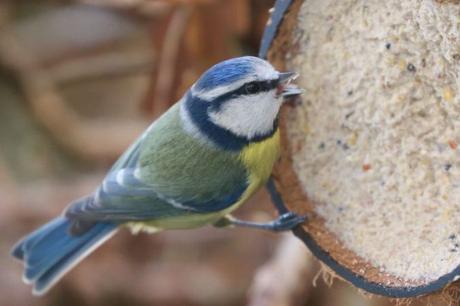
Blue Tit (Cyanistes caeruleus) on fat filled Coconut feeder
The Strong adult bills cope with seeds, sunflower hearts and peanuts but come springtime and early summer their chicks need caterpillars and up to 100 caterpillars a day, so for a brood of 10, thats 1,000 per day, collected from trees and shrubs. A very good reason to plant more trees, shrubs and a native hedge.
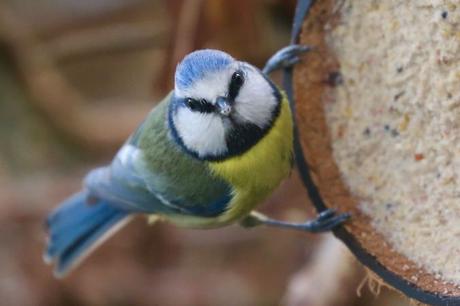
Blue Tit
To the right of our east facing dining room window we have a veteran climbing hydrangea petiolaris, nearly 15 feet wide and 10 feet tall. The Summer flowers are a Bee magnet but in the winter when the leaves drop the gnarled structure becomes a playground for birds. Hanging fat filled coconut shells from the branches near the windows have brought in some confident Blue Tits. They are more common in our UK gardens now; once they would have lived primarily in deciduous woodland, where the food they need for their chicks to survive is hopefully abundant. The BTO report that males are usually brighter in color than the females and the youngsters have pale yellow rather than white cheeks, but so far I haven’t been able to distinguish the adults apart, hopefully there will be a chance to see a chicks pale yellow cheeks next spring.
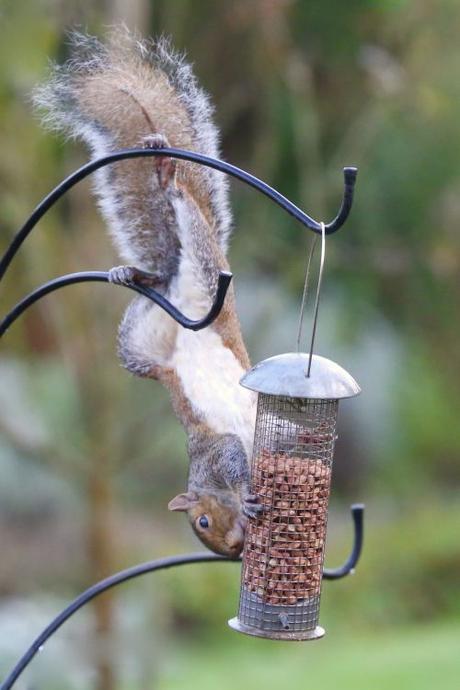
Squirrel stealing the birds peanuts
Another woodland but sometimes less welcome visitor is the Squirrel, we feed the birds every day and winter peanuts are pricey but birds bring so much joy and make our garden a better place to be. As winter begins several Grey Squirrels are visiting, all with a variation in colouring, we were really intrigued to see one with the cream underbelly colouring of our native Red Squirrel. But its not a hybrid, just a variation. The Greys are still causing controversy and the cull debate goes on. Anglesea an island off the north coast of Wales separated by the Menai Strait and linked to the mainland by two bridges have just declared they are a Grey Squirrel free zone. They achieved this by culling the Greys with the last reported sighting in 2013. There are now 700 Red Squirrels on the Island, which they hope will thrive.
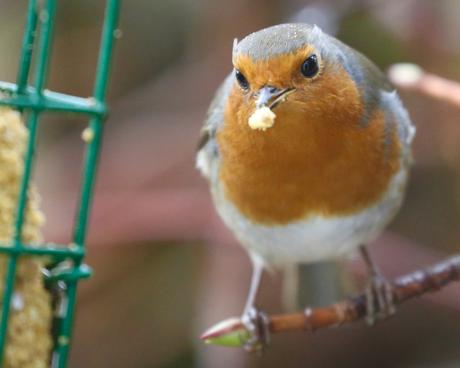
Robin (Erithacus rubecula)
We have noticed Robins trying to extract seed from the feeders but they do not seem to be designed to cling on. Occasionally I put mealworms and sunflower hearts on a mesh ground platform for Robins but our wet November often left a soggy mess. So we placed fat filled cages adjacent to convenient branches, close enough for the Robin to reach across and take the spoils. Sheltering from the high wind this little chap was quite happy for me to stand close by with a camera.
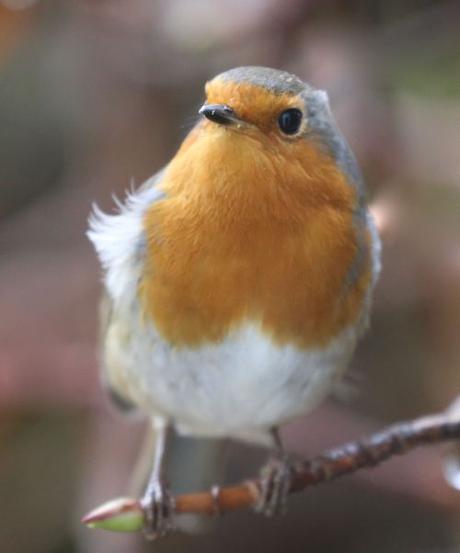
Elsewhere in our garden, I am bundling up the hollow stems of the wind strewn perennials and stacking logs to create ‘dead wood habitats’ which should rot down and any overwintering invertebrates provide more food for birds in the Spring. The hollow stems and seed heads will provide shelter for lady birds, lacewings and other beneficials. Piles of leaves have been stuffed into hedge bottoms. And we’ve been cleaning bird boxes and putting up new ones in readiness for the next cycle of life.
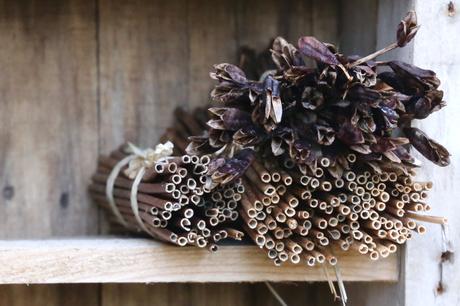
With many thanks as always to Tina at My Gardener Says for her inspiring Wildlife Wednesday meme.
Happy Wildlife Watching!
